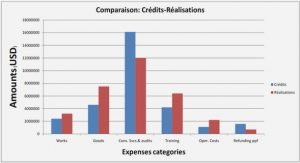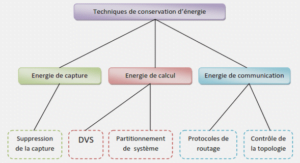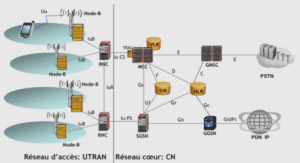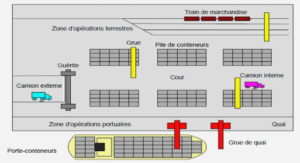The North American boreal forest extends from the Pacifie to the Atlantic coast, which represents one of the largest ecosystems on the planet. In Quebec, the boreal zone is easily the largest of all vegetation zones (Pothier, 2001), covering an area of around 1 million km2 , or 70% ofQuebec’s territory. The evergreen conifer black spruce (Picea mariana (Mill.) and the broad-leaved deciduous aspen (Populus tremuloides Michx.) are among the few dominant, commercially important tree species with a North American trans-continental distribution that grow in a wide range of sites. The two species have contras ting autecological and forest characteristics (Viereck & Johnston, 1990) and are typically part of characteristic ecosystems that differ in biotic community, abiotic environment, structure, function, complexity, interactions (Ewald, 2000) and usually occupy different successional positions during the stand initiation stage of stand development (Larsen, 1980; Burns & Honkala, 1990). The boreal forest of eastern Canada is an ecosystem in which ecological processes are controlled by disturbances such as fire that influence the vegetation composition and dynamics (Heinselman, 1981; Bergeron, 1991). However, in the last decades, harvesting disturbed as much forested stands within the boreal forest as fire (Chen & Popadiok, 2002). These disturbances create a mosaic pattern in the forest, characterized by a large variability in species composition (Roberts & Gilliam, 1995).
Aspen is a good example of early successional pwneer spec1es (Perala, 1990). It is disturbance-dependent, fast growing, short lived, and requires high light environments for establishment and rapid growth (Perala, 1990; Shepperd, 2001). Aspen’s high plasticity to different environmental conditions is evident from its wide geographie distribution, range of climates and sites, and association with many different species. Aspen is capable of reproducing from stump sprouts (Schier et al., 1985) and seeds (Perala, 1990), but root suckering from the parent root system is the primary means of natural regeneration (Zasada et al., 1992; Lieffers et al., 2002; Frey et al., 2003). Although, the capacity of aspen for producing seed is high, the seeds are short-lived, generally lasting for two or three weeks (Maini, 1968). The seedlings’ establishment success has been thought to be influenced by the combination of wide expanses of gap opening, exposed mineral soil and an abundant source of water during seed germination and establishment (McDonough, 1979; Mitton & Grant, 1996). Despite abundant seed crops (Bell, 1991), most authors report that seedlings establishment is relatively rare, although it has often occurred in post-fire stands (Kay, 1993; Romme et al., 1997, 2005; Turner et al., 2003). Reproduction is thus assumed to occur mainly asexually through root suckers following major disturbances. Asexual reproduction leads to clonai stand structure, in which one clone (genet) may consist of several trees (ramets ). Disturbances that damage, eut or kill stems trigger root suckering, allowing for rapid stand regeneration (Jones & DeByle, 1985; Shepperd, 1990).
Stand dynamics and structure after harvest
Forest harvesting produces different environmental conditions that can create different patterns of stand regeneration. Since 1995, silvicultural practices have been clearly directed toward harvesting with protection of pre-established regeneration and soils (CPRS), an approach intended to preserve sorne features of pre-harvest stand composition and structure (Government du Québec, 1996). It has replaced conventional clear-cutting in the boreal forest. When regeneration is insufficient to ensure forest renewal, the harvested blocks are scarified and then planted (CPRS with scarification). However, in the last two decades, there is more concern about the increase of hardwood presence in post- compared to pre-harvest stands (Jeglum, 1983; Reich et al., 2001; Greene et al., 2002; Laquerre et al., 2011). These concerns have led to experiment other harvesting practices such as partial-cutting (PC), which may be better to control competitor vegetation (as pen) and improve seedling establishment ( conifers ). Partial cutting treatments maintain a continuo us uneven -aged forest stand cover by harvesting a limited number of trees of various sizes and ages over time. The influence of the harvesting on patterns of tree species depends not only upon the level of environmental variability, but also on the change in eco-physiological responses through time. Thus, tree species of varying successional status exhibit differences in ecophysiological responses.
Stand initiation following disturbances (clear-cutting with scarification, clear-cutting or partiallogging) results from the important changes that these disturbances cause in the forest stand structure. Their occurrence often leads to the complete removal of the canopy, complete or partial removal of the under-story and ground vegetation, and elimination and (or) disturbance of forest floor, creating favorable environmental conditions for the establishment and growth of a new forest stand (Keenan & Kimmins, 1993). However, these compositional differences often result in the increased presence and (or) a bun dance of many pioneer species following harvesting activities (Carleton & MacLellan, 1994; Reich et al., 2001). Aspen is a strict pioneer species that often have higher light-saturated gas exchange rates of photosynthesis compared to late successional species (Bazzaz & Carlson, 1982; Kubiske & Abrams, 1993, 1994). Black spruce, on the other hand, is considered a shade-intolerant species that grows best in full sunlight but is capable of surviving for long periods at low light intensities (Heinselman, 1957, 1981). In general, the species adapted to high resource environments have high potential rates of resource capture and growth relative to species characteristics of low resource environments. In this condition, aspen often colonizes highlight early successional sites (Reich et al. , 1998). On the other hand, low potential growth rate is presumed to be an acclimation to habitats characterized by low resource availability (Chapin, 1980; Reich et al., 1992), such as shaded and nutrient poor environments in which black spruce is a good example.
Dynamics of aspen regeneration after harvest
Dynamics of aspen regeneration varies based on stand structure before harvesting; if addressed jointly, the characteristics of stand pre-harvest and aspen’s eco-physiological behavior influenced by environmental factors after harvesting, provide a perspective to understand aspen dynamics. As discussed earlier, aspen is disturbance-dependent and can regenerate at very high densities, sometimes exceeding 100,000 stems per hectare at age 2 (Steneker, 1976; Bella, 1986). Most suckers arise in the frrst year after a major disturbance, and a small proportion of suckers originate in the second and third growing seasons (Schier & Campbell, 1978). Most suckers originate from lateral roots that are closest to the surface of the soil (Peterson & Peterson, 1992). Root distribution is likely the primary reason for the
high variability in sucker establishment by determining the environment for sucker initiation and the susceptibility of roots to disturbance (Shepperd, 1993). The processes controlling suckering are well known and documented (Frey et al., 2003). These processes include the disruption of apical dominance (Horton & Maini, 1964; Steneker, 1976; Perala, 1977; Doucet, 1989; Navratil, 1991; Peterson & Peterson, 1992), increased soil temperature (Horton & Maini, 1964; Zasada & Schier, 1973; Doucet, 1989) and increased light availability (Doucet, 1989; Navratil, 1991). Apical dominance refers to the balance of auxins and cytokinins in the roots. Auxins, which suppress the production of suckers, are produced in the above-ground parts of the tree at the apical meristem (Farmer, 1962; Bancroft, 1989). Cytokinins, which are hormones produced in the root tips, promote suckering (Navratil, 1991). The interruption of the flow of auxins to the roots, caused by the tree harvesting or root injuries, causes a disruption of the ratio between these two hormones, thereby triggering sucker initiation (Navratil, 1991). High auxin to cytokinin ratios suppress suckering, while a low ratio promotes sucker initiation (Navratil & Bella, 1988).
The presence of mature aspen trees after harvesting has been found to have a significant impact on sucker initiation (Schier & Smith, 1979; Schier et al., 1985). Since most trees in a mature stands are physically interconnected through their root system in the boreal forest (DesRochers & Lieffers, 2001), hormones that inhibit sucker initiation may continue to be transported from residual aspen trees to most of the root system, limiting suckering. In this regard, partial cutting methods (PC) appear as good solutions to limit sucker initiation and growth of aspen suckers (Gifford, 1967; Schier & Smith, 1979; Ffolliott & Gottfried, 1991; Huffman et al., 1999). PC also creates low light availability in post-harvest stands, limiting photosynthesis (Landhausser & Lieffers, 2001) and shading out competitors sufficiently to allow establishment of coniferous seedlings (Lieffers et al., 1993). On the other hand CPRS or CPRS-S will significantly increase light and soil temperatures, which might enhance sucker production and growth (Maini & Horton, 1966; Hungerford, 1988). Likewise, the scarification process removes litter protecting the root system that should also lead to enhanced sucker production (Kemperman, 1978).
Aspen genetic structure
In general, population genetics theory suggests that variation in genetic structure increases with species environmental variation, population size, and range. It is thus not surprising that as pen is considered a genetically diverse tree species (David et al., 200 1; Madritch et al., 2006). Aspen has separate male and female flowers (i.e. dioecious), and wind pollination ensures great levels of genetic diversity (Burns & Honkala, 1990; David et al., 2001). The wide genotypic variability in aspen that results in equally wide phenotypic variability among clones is important to the ecology and management of this species. Aspen genetics studies may aid us in understanding exp lana tory mechanisms for the species’ great adaptability to varying environments. This large donal diversity is reflected in different patterns of carbohydrate reserves in roots (Schier & Johnston, 1971), suckering capacity (Schier & Campbell, 1980), and growth rates between clones (Eames, 1969).
GENERAL CONCULSION
This study documented aspen recruitment (aspen expansion) after harvesting into coniferdominated stands of northwestern Quebec boreal forest. Our results are consistent with reports from northwestem Quebec and northeastem Ontario (e.g. Carleton & MacLellan, 1994; Carleton, 2000; Grondin et al., 2003; Laquerre et al., 2009, 2011) showing aspen’s northern expansion into the black spruce forest. Our study also clearly showed that aspen recruitment through seedling establishment is more frequent than previously expected (Perala, 1990; Jelinski & Cheliak, 1992; Greene et al., 2007). We predicted that sexual reproduction would be infrequent because aspen seeds are very short lived and seedbed conditions suitable for germination are quite narrow and uncommon in areas where mineral soil exposure is not prevalent (David et al., 200 1). However, previous research at the Northem Forestry Centre in Alberta has revealed an abundance of seedlings, primarily in lodgepole pine cutovers on mesic and subhydric sites (Peterson & Peterson, 1992), at variable densities (ranging from 1,000 to 16,000 seedlings per hectare). Other reports of seedling establishment following disturbance into higher elevation of the Rocky Mountains questions the notion that exposure of mineral soil substrate in conjunction with a warming climate plays a main role in as pen seedlings establishment (Landhausser et al., 20 10).
|
Table des matières
CHAPTER I GENERAL INTRODUCTION
1.1 Stand dynamics and stand structure after harvest.
1.2 Dynamics of as pen regeneration after harvest
1.3 Aspen genetic structure
1.4 Research objectives
CHAPTER II THE IMPACT OF HARVESTING INTENSITY ON ASPEN RECRUITMENT AND GENETIC STRUCTURE IN A CONIFERIUS STAND
2.1 Abstract
2.2 Résumé
2.3 Introduction
2.4 Materials and methods
2.4.1 Study sites
2.4.2 Sampling design
2.4.3 Laboratory analysis
2.4.4 Statistical analysis
2. 5 Results
2.5.1 Aspen recruitment
2.5.2 Aspen genetic and genotypic diversityo
2.6 Discussion
2.6.1 Genetic structure
2. 7 Conclusion
2. 8 References
2.9 Acknowledgments
CHAPTERIII GENERAL CONCLUSION
![]() Télécharger le rapport complet
Télécharger le rapport complet






